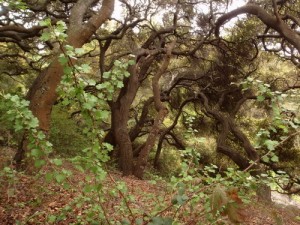 Sudden Oak Death is a fungus-like water mold that threatens our beautiful Coast Live Oaks. Besides their beauty, oaks are critical to the survival of many plants and animals, and the functioning of our watersheds. Dead or dying oaks greatly increase fire danger, and trees or limbs can fall suddenly, endangering people or property.
Sudden Oak Death is a fungus-like water mold that threatens our beautiful Coast Live Oaks. Besides their beauty, oaks are critical to the survival of many plants and animals, and the functioning of our watersheds. Dead or dying oaks greatly increase fire danger, and trees or limbs can fall suddenly, endangering people or property.
According to Dr. Matteo Garbelotto, head of the Forest Pathology Lab at UC Berkeley, writes: “2011 was a bad year for our oaks. Prolonged spring rains have resulted in a significant spread of Sudden Oak Death throughout the state,” including the East Bay.
Please mark your calendars for Saturday and Sunday, April 28-9. After an hour-long training by Dr. Garbelotto at 1 PM Saturday on the UC Berkeley campus, you’ll collect suspect bay leaves (the main carriers to oaks) on your own time, and where you choose, for lab testing. You return suspect samples to a drop-box on the UC Berkeley campus by Sunday evening.
We will gladly help you plan a route — just ask on the signup form. This year’s blitz will follow a new protocol that makes it possible to estimate the actual local SOD infection rate!
Sign up for the training at //sodblitz2012.eventzilla.net.



